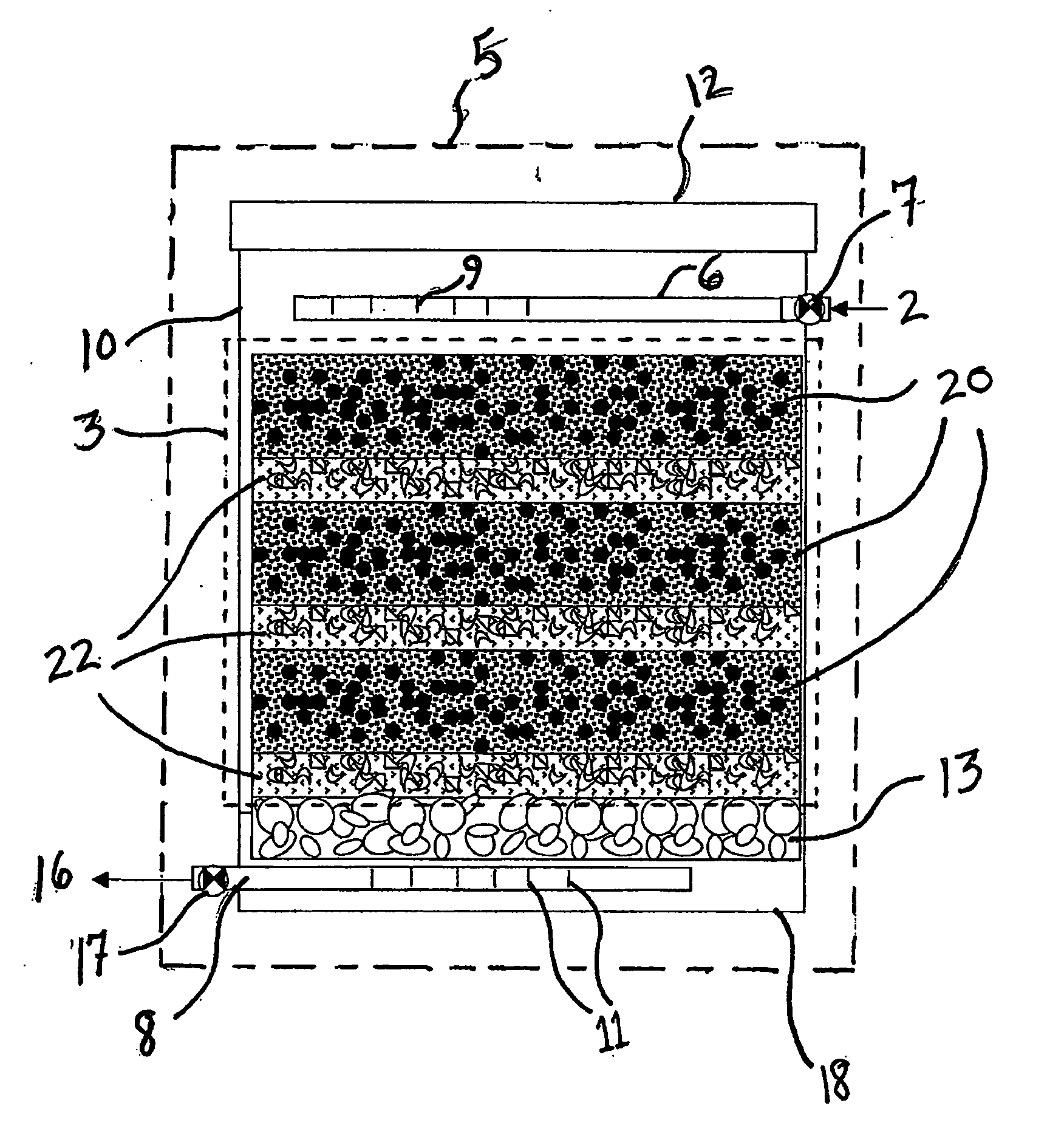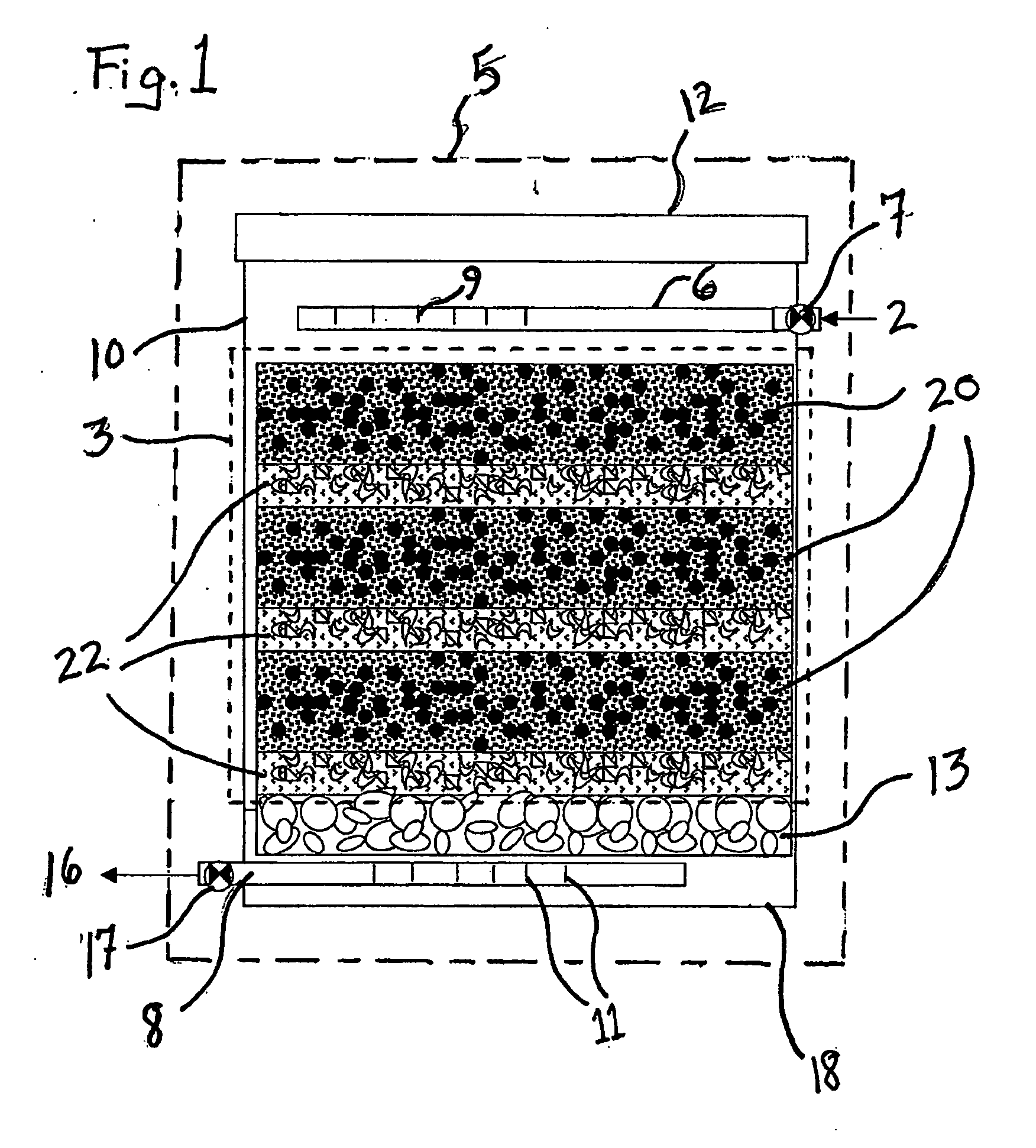Process for autotrophic denitrification using elemental sulfur and mollusk shells
a technology of elemental sulfur and mollusk shells, which is applied in the direction of biological water/sewage treatment, separation processes, filtration separation, etc., can solve the problems of degrading natural waters, sub-surface wastewater treatment systems, septic systems, and excessive amounts of nitrogen discharged from decentralized, degraded natural waters, etc., to reduce the loading of waste water
- Summary
- Abstract
- Description
- Claims
- Application Information
AI Technical Summary
Benefits of technology
Problems solved by technology
Method used
Image
Examples
Embodiment Construction
[0076] Preferred embodiments of the invention provide for, inter alia, a bioreactor unit, a novel treatment media, autotrophic bacteria seeded to the media, and related components to comprise a treatment system and operational method for reducing nitrogen in waste water. A preferred embodiment of the treatment media employs an electron donor, such as elemental sulfur, for example, and a buffering material having a high content calcium carbonate material such as mollusk shells or crushed coral material, for example. According to a further preferred embodiment, the media can be seeded by at least one of the species Thiobacillus denitrificans and Thiomicrospira denitrificans.
[0077] The invention offers substantial and significant advances over conventional sulfur and carbonate-based autotrophic denitrification system, including by achieving greater nitrogen reductions, maintaining higher alkalinity, producing less nitrite and requiring less backwashing.
[0078] Tank bioreactors greater...
PUM
| Property | Measurement | Unit |
|---|---|---|
| volume | aaaaa | aaaaa |
| size | aaaaa | aaaaa |
| size | aaaaa | aaaaa |
Abstract
Description
Claims
Application Information
 Login to View More
Login to View More - R&D
- Intellectual Property
- Life Sciences
- Materials
- Tech Scout
- Unparalleled Data Quality
- Higher Quality Content
- 60% Fewer Hallucinations
Browse by: Latest US Patents, China's latest patents, Technical Efficacy Thesaurus, Application Domain, Technology Topic, Popular Technical Reports.
© 2025 PatSnap. All rights reserved.Legal|Privacy policy|Modern Slavery Act Transparency Statement|Sitemap|About US| Contact US: help@patsnap.com



